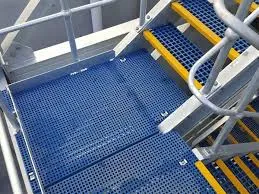
-
 Afrikaans
Afrikaans -
 Albanian
Albanian -
 Amharic
Amharic -
 Arabic
Arabic -
 Armenian
Armenian -
 Azerbaijani
Azerbaijani -
 Basque
Basque -
 Belarusian
Belarusian -
 Bengali
Bengali -
 Bosnian
Bosnian -
 Bulgarian
Bulgarian -
 Catalan
Catalan -
 Cebuano
Cebuano -
 China
China -
 China (Taiwan)
China (Taiwan) -
 Corsican
Corsican -
 Croatian
Croatian -
 Czech
Czech -
 Danish
Danish -
 Dutch
Dutch -
 English
English -
 Esperanto
Esperanto -
 Estonian
Estonian -
 Finnish
Finnish -
 French
French -
 Frisian
Frisian -
 Galician
Galician -
 Georgian
Georgian -
 German
German -
 Greek
Greek -
 Gujarati
Gujarati -
 Haitian Creole
Haitian Creole -
 hausa
hausa -
 hawaiian
hawaiian -
 Hebrew
Hebrew -
 Hindi
Hindi -
 Miao
Miao -
 Hungarian
Hungarian -
 Icelandic
Icelandic -
 igbo
igbo -
 Indonesian
Indonesian -
 irish
irish -
 Italian
Italian -
 Japanese
Japanese -
 Javanese
Javanese -
 Kannada
Kannada -
 kazakh
kazakh -
 Khmer
Khmer -
 Rwandese
Rwandese -
 Korean
Korean -
 Kurdish
Kurdish -
 Kyrgyz
Kyrgyz -
 Lao
Lao -
 Latin
Latin -
 Latvian
Latvian -
 Lithuanian
Lithuanian -
 Luxembourgish
Luxembourgish -
 Macedonian
Macedonian -
 Malgashi
Malgashi -
 Malay
Malay -
 Malayalam
Malayalam -
 Maltese
Maltese -
 Maori
Maori -
 Marathi
Marathi -
 Mongolian
Mongolian -
 Myanmar
Myanmar -
 Nepali
Nepali -
 Norwegian
Norwegian -
 Norwegian
Norwegian -
 Occitan
Occitan -
 Pashto
Pashto -
 Persian
Persian -
 Polish
Polish -
 Portuguese
Portuguese -
 Punjabi
Punjabi -
 Romanian
Romanian -
 Russian
Russian -
 Samoan
Samoan -
 Scottish Gaelic
Scottish Gaelic -
 Serbian
Serbian -
 Sesotho
Sesotho -
 Shona
Shona -
 Sindhi
Sindhi -
 Sinhala
Sinhala -
 Slovak
Slovak -
 Slovenian
Slovenian -
 Somali
Somali -
 Spanish
Spanish -
 Sundanese
Sundanese -
 Swahili
Swahili -
 Swedish
Swedish -
 Tagalog
Tagalog -
 Tajik
Tajik -
 Tamil
Tamil -
 Tatar
Tatar -
 Telugu
Telugu -
 Thai
Thai -
 Turkish
Turkish -
 Turkmen
Turkmen -
 Ukrainian
Ukrainian -
 Urdu
Urdu -
 Uighur
Uighur -
 Uzbek
Uzbek -
 Vietnamese
Vietnamese -
 Welsh
Welsh -
 Bantu
Bantu -
 Yiddish
Yiddish -
 Yoruba
Yoruba -
 Zulu
Zulu
Creating a Safe and Stylish Handrail for Your Space
The Importance of GRP Handrails in Modern Infrastructure
In the realm of modern architecture and construction, safety and durability have become paramount. One integral element that enhances both functionality and aesthetic appeal in various structures is the GRP (Glass Reinforced Plastic) handrail. As more industries focus on innovation and sustainability, GRP handrails are proving to be essential components in ensuring safety while minimizing environmental impact.
The Importance of GRP Handrails in Modern Infrastructure
Furthermore, GRP materials are inherently resistant to corrosive substances. Unlike traditional materials such as wood or metal, which may deteriorate over time due to exposure to moisture, chemicals, or harsh weather conditions, GRP maintains its integrity and appearance across diverse environments. This resistance makes GRP handrails particularly suitable for marine applications, chemical plants, and facilities located in coastal areas where saltwater exposure is a concern.
grp handrail

Safety is a non-negotiable priority in any construction project, and GRP handrails are designed with this in mind. The materials used in their production can be engineered to provide slip-resistant surfaces, reducing the likelihood of accidents caused by slips and falls. Additionally, GRP handrails can be manufactured in various colors and finishes, allowing for better visibility in low-light conditions. This customization not only enhances safety but also facilitates compliance with aesthetic and regulatory requirements.
Sustainability is another major aspect driving the adoption of GRP handrails. In recent years, the construction industry has increasingly leaned towards eco-friendly materials. GRP handrails can be produced in a manner that minimizes environmental impact. Some manufacturers utilize recycled materials in their composite formulations, further contributing to sustainability efforts. Moreover, with a longer lifespan compared to traditional materials, GRP handrails reduce the frequency of replacements, leading to less waste and fewer resource expenses over time.
Installation of GRP handrails is also notably efficient. Their lightweight nature simplifies transportation and installation processes, reducing labor costs and time associated with setting up safety measures in any facility. Additionally, GRP can be molded into various shapes and sizes, allowing for versatile design options that can fit a broad range of architectural needs.
In conclusion, GRP handrails represent a perfect amalgamation of safety, durability, and sustainability. Their resistance to environmental factors, customizable design features, and ease of installation make them an ideal choice for modern infrastructure. As the construction industry continues to evolve, the demand for innovative solutions like GRP handrails is likely to rise, paving the way for safer and more resilient buildings. Adopting GRP handrails not only enhances the safety of users but also reflects a commitment to sustainable practices in construction.
Latest news
-
Exploring the Benefits of Top Hammer Drifter Rods for Enhanced Drilling PerformanceNewsJun.10,2025
-
High-Precision Fiberglass Winding Machine for GRP/FRP Pipe Production – Reliable & Efficient SolutionsNewsJun.10,2025
-
FRP Pipes & Fittings for Shipbuilding - Corrosion-Resistant & LightweightNewsJun.09,2025
-
Premium FRP Flooring Solutions Durable & Slip-ResistantNewsJun.09,2025
-
Premium Fiberglass Rectangular Tanks Durable & Lightweight SolutionNewsJun.09,2025
-
Tapered Drill String Design Guide Durable Performance & UsesNewsJun.09,2025









